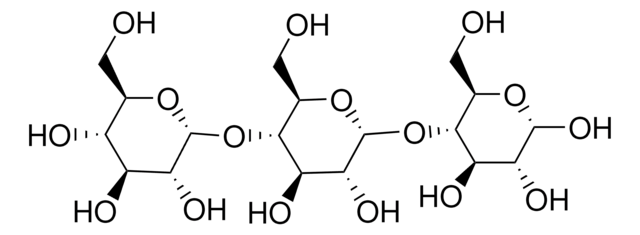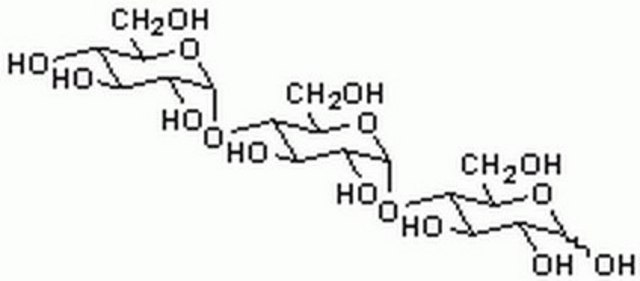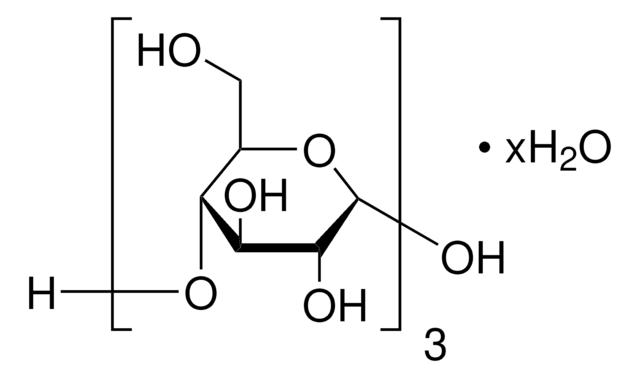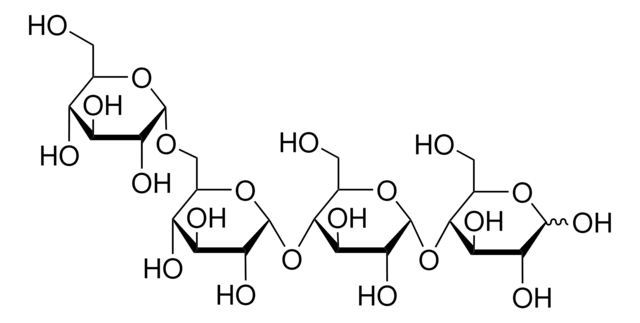M8253
Maltotetraose
≥50% (HPLC)
Synonym(s):
Amylotetraose
About This Item
Recommended Products
concentration
≥50% (HPLC)
SMILES string
OC[C@H]1O[C@H](O[C@H]2[C@H](O)[C@@H](O)[C@H](O[C@@H]2CO)O[C@H]3[C@H](O)[C@@H](O)[C@H](O[C@@H]3CO)O[C@H]4[C@H](O)[C@@H](O)[C@@H](O)O[C@@H]4CO)[C@H](O)[C@@H](O)[C@@H]1O
InChI
1S/C24H42O21/c25-1-5-9(29)10(30)15(35)22(40-5)44-19-7(3-27)42-24(17(37)12(19)32)45-20-8(4-28)41-23(16(36)13(20)33)43-18-6(2-26)39-21(38)14(34)11(18)31/h5-38H,1-4H2/t5-,6-,7-,8-,9-,10+,11-,12-,13-,14-,15-,16-,17-,18-,19-,20-,21+,22-,23-,24-/m1/s1
InChI key
LUEWUZLMQUOBSB-ZLBHSGTGSA-N
Looking for similar products? Visit Product Comparison Guide
General description
Application
Storage Class Code
13 - Non Combustible Solids
WGK
WGK 3
Flash Point(F)
Not applicable
Flash Point(C)
Not applicable
Personal Protective Equipment
Regulatory Information
Choose from one of the most recent versions:
Already Own This Product?
Find documentation for the products that you have recently purchased in the Document Library.
Our team of scientists has experience in all areas of research including Life Science, Material Science, Chemical Synthesis, Chromatography, Analytical and many others.
Contact Technical Service





